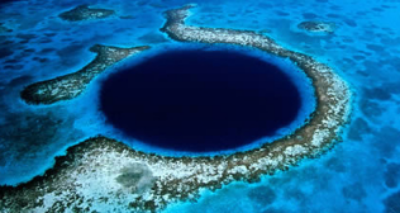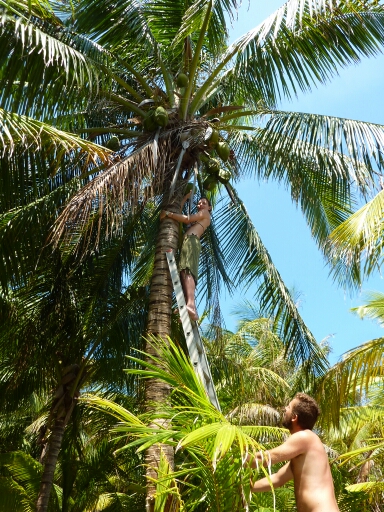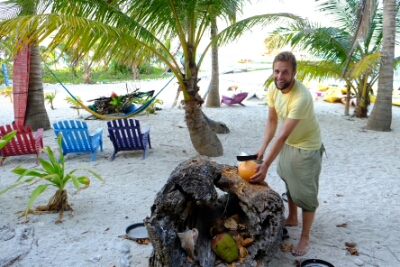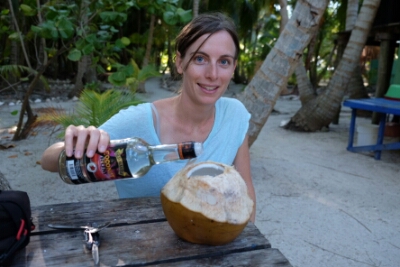Blog Archives
Belize Part II – The Mainland
In between our trips to Belize’s Cayes, we have also seen a bit of the interior of the country which has a very different vibe and culture.
After Caye Caulker we ventured out to Orange Walk to visit the Lamanai Mayan ruins. The town is home to Belize’s biggest rum distillery (the local Alcoholic Anonymous group certainly wasn’t as full as it should have been!) and some excellent street food influenced by its proximity to Mexico!
It’s an amazing multicultural place, where you see Belizeans, Mayan, Chinese, Hindus and Mennonites all in a short walk around town where you can hear people speaking Creole, English, Chinese, German or Spanish as a first language depending on their background.
The Mennonites, the most recent group to migrate there, have been a welcome addition to the under-populated country, bringing farming and woodworking expertise (although they are also blamed for clearing forest for farm land). They are a religious people originating from Germany who create their own sustainable communities and most of them do not use technology. After migrating through various different countries (Canada, Mexico, etc) who didn’t fully accept their way of living, they have settled in Belize because the country allows them to exist outside the taxation system as they claim that they don’t benefit from the welfare. It’s easy to recognise them, men wear overalls, blue shirts and farmer hats while women stick to ankle length dresses.
From Orange Walk we visited the Lamanai ruins, which are reached by boat, after cruising through a complex series of tight and not so tight river bends, slowing only to pass local fishermen and spot wildlife, before arriving at the destination on the side of a large freshwater lake.
The temples in Lamanai are largely unexcavated, so are partially covered in jungle. We walked between temples along jungle paths with howler monkeys and even saw a snake and a toucan! The guides taught us the howler monkey call which has since proven handy in our more recent jungle expeditions (more on that in a later post).
The temples are thought to be solid structures used for religious ceremonies (temples with crest) and astronomy (flat roofed pyramids).
Contrary to popular belief, there is very little evidence to suggest that Mayans performed human sacrifices (except after ball games and if they discovered people counterfeiting the cacao bean currency with balls of dirt – there are a lot of conflicting stories around).
This is especially true in Lamanai as the abundance of water left the people no need to try and appease the rain god.
Before crossing the border to Guatemala, we visited the biggest concentration of Mayan people in Belize, who live in the Toledo Region in the South. To get there, we left the local bus heading South towards Punta Gorda at the turnoff to San Felipe and started to walk along the dirt road hoping to get a ride along the way. Our hitch hiking technique is a bit of a competition and involves us taking turns to stick out the thumb. After a few failed attempts, Xavi managed to hail us a ride ( Xavi 1 – Sal 0) holding onto the back of a red 4WD (that was already full inside) to San Felipe, our cacao farm destination.
After probably the best chicken, rice and beans of the trip so far (and yes there have been many!) which was all made with ingredients from the farm, we started our lesson in chocolate making and Maya culture.
The process of making chocolate while involving many steps is actually amazingly simple. Starting with picking the cacao pod from the tree, the beans inside are selected and, after separating them from the fruit around them, roasted, peeled, then crushed by hand using special stone tools.
From there we added the desired quantity of sugar for an 80% cacao recipe, crushed/mixed again before dropping into molds for refrigeration and voila! We were so busy enjoying the end product that we forgot to take pictures!
Apart from making chocolate, our host Juan also explained a few interesting details about Mayan history including the end of the Mayan calendar in Dec 2012. Basically the whole apocalypse scenario was all drummed up by Hollywood and foreigners. In reality, the ending of the ancient Mayan calendar signified the end of an era calculated mathematically and linked with the astrological cycles of the sun and constellations. Nevertheless, business owners in all Central America were really happy with the boost in tourism!
We visited another few villages in the area the following day with an ambitious plan to hitchhike to a local waterfall. It didn’t go quite to plan when after walking 45 mins on a really hot day along a road with no shade we still hadn’t had any success – at this stage I was having serious second thoughts about not having waited a few hours for the direct bus! But to Xavi’s surprise, he managed to get us another free ride with a local school teacher on long service leave (Xavi 2 – Sal 0).
To conclude our Belize chapter, we continued south to Punta Gorda, another seaside village, and caught a small boat over to Livingston in Guatemala. More adventures to come from there soon!
Lots of love,
Xavi & Sal
Belize Part I – The Barrier Reef
Belize, a multi-cultural country the size of Jamaica and only 325,000 inhabitants, is home to the second largest barrier reef in the world and was a must-go destination for us because we love diving! 
We left you with the 6hr overnight bus ride from Tulum. Once in Belize City, a pretty dodgy place (4 people were murdered there over Easter holidays), we went straight from the bus station to the docks with other travellers. There we took the 45min water taxi to Caye Caulker, a backpacker-friendly, caribbean style piece of paradise where push bikes and golf carts are the preferred ways to get around. 
Caye Caulker’s place to be is ‘the split’, a channel of water with a strong current created by Hurricane Hattie in the early sixties, that cut the caye in two. Nowadays, tourists and locals party, launch themselves into the channel, drink and dance to reggae and disco hits at The Lazy Lizard in this spot, which is also a prime location for sunset viewing.  
Sal and I got into the island mood, where everything goes quite slowly with ease… but after a couple of days of lazing around, we had an early 4.45am start to gear up for the famous Great Blue Hole dive. Located at the Lighthouse Reef, around 2 hours south-east of Caye Caulker, the Great Blue Hole is a 124 metre deep cave that collapsed 153,000 years ago!
It became really popular thanks to Jacques Cousteau, who declared it one of the top10 dives in the world.  And he was right.. after an easy 15m descent to the sandy floor of the reef, you face a 300 metre in diameter hole that drops into an abyss of darkness. I felt like we were Sandra Bullock and George Clooney in Gravity, so when we started the descent into the deep blue, I almost shat in my wetsuit! Once I got myself together, we cruised down to the depth limit for leisure diving (40m), where the hole opens up, and navigated in and around out-of-this-world stalactites under the watchful eyes of a few curious 3 metre reef sharks. All of our pictures turned out too dark, you need pretty good equipment down there.
The bottom time is short (8min), but the images will remain in our minds forever. Climbing the hole up to shallower and brighter depths felt like going back to reality. Overall, a great experience, topped off with 2 more dives where we saw plenty of tropical fish and turtles.
We had another bit of excitement on a canoe trip to explore the part of the island north of the split. After paddling a few hours against the current & wind crossing the channel to get back (not our cleverest idea to go with the wind first), we were ‘rescued’ by an American couple in their dinghy saving us a lot more hard paddling! Back at the caye, we ended our 3 day stay watching an American rap video clip being filmed (hilarious), learning new card games and meeting other backpackers at the hostel. 
Once returned to the mainland and after a week of exploring, we had crossed most of Belize’s coast and we were ready for our 2nd seaward expedition, to Glover’s Reef. Glover’s Reef is a partially submerged atoll 45km off the mainland. We stayed on North-East Caye, which barely takes 5min to walk around. On the way there we met a great bunch of fellow travellers, Anton & Lilly, Sylvan & Chantal, Romain and Nathalie to share the sunsets, drinks, activities and meals with, thanks guys! 
While the pictures may look as if we stayed in a fancy resort, the truth is that it’s pretty affordable and there are different accommodation options, from camping in your own tent, a dorm, beach cabins, up to nice cabins over the water. Sal and I enjoyed a dorm to ourselves (no farting teenagers this time, Furo). The rest of facilities were pretty basic (compost toilets, bore water showers, no electricity,…) so it felt a bit like our own Robinson Crusoe / LOST adventure. 
The stay was really cool, a real slice of paradise! To begin with, all the coconuts you can find/open/eat/drink are free. Sal turned into the Scrat (the squirrel from Ice Age) in coconut heaven and started trying to climb trees and stockpile coconut after coconut.
Then we were trained in the opening techniques, either the machetes for the drinking ones (green and yellow on the outside, still hanging from the trees – great with coconut rum!)….  
…or the “peeling stick” & machete combination for the eating ones (already brown and fallen from the trees). Happy to say we still have all our fingers intact!   
After lots of reading, lying on hammocks and peeling coconuts, we went for a couple of dives, but snorkelling was so good that we stuck to free diving after that. Tropical fish, beautiful coral, nurse sharks, eagle rays, lobsters… you name it, we were spoiled for choice.      
Spear-fishing is very popular too. In fact, you could buy fresh fish almost every night from the locals that run the resort. Luckily for us we met an American guy who was happy to swap a couple of freshly caught red snapper for coco-locos…
we couldn’t believe our luck, as his experienced local guide deboned and scaled the fish on the jetty for us.
We prepared them 2 ways: in a Jamaican curry sauce with coconut milk and coconut rice and just grilled over coals.  The 2 snapper fed our group of 8 and we still had leftovers for the next day, definitely the best meal of the trip so far! 
This has been a long post, so we will cover Belize by land in the next update! Thanks for following us! 





















































